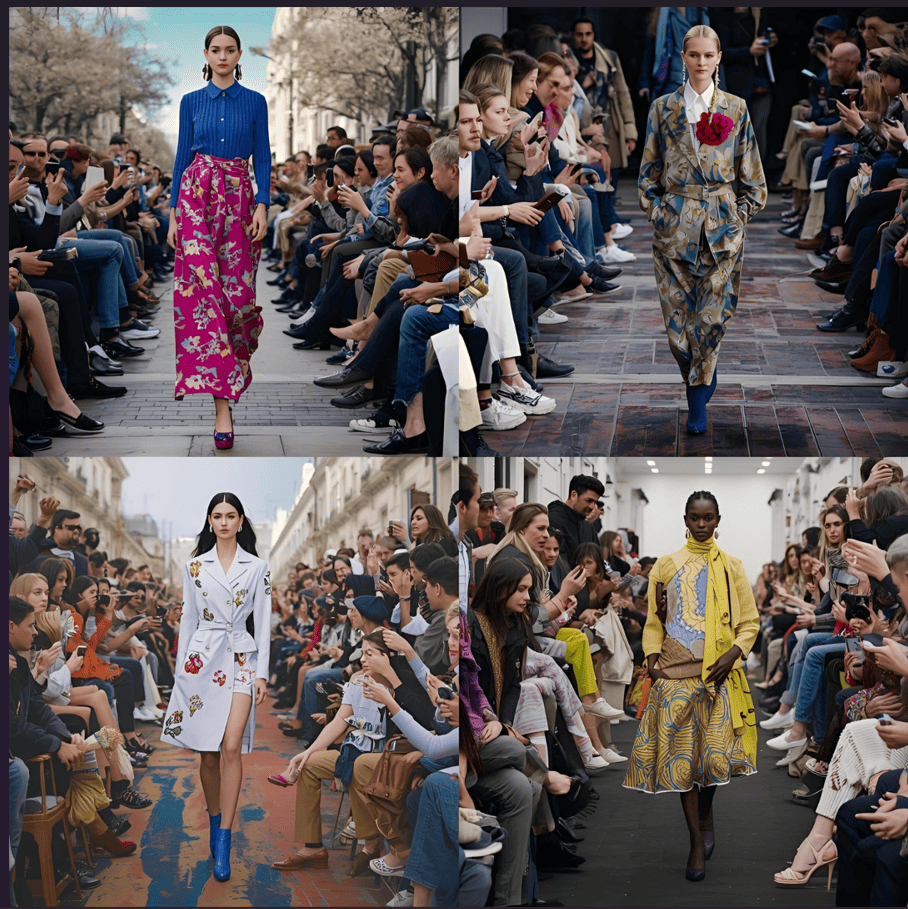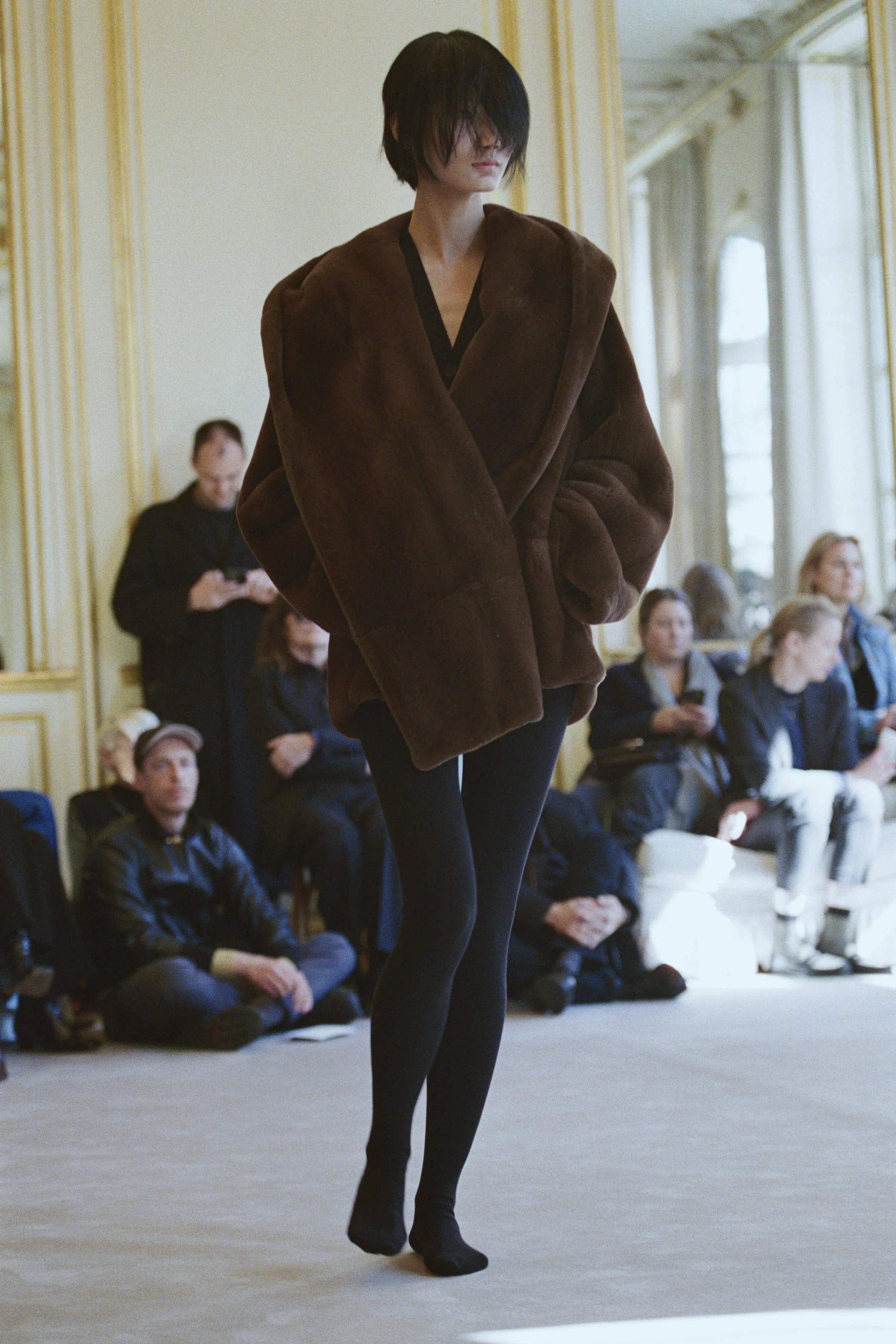Every year, the fashion world pulses to a familiar rhythm — four beats, four cities, four worlds of creativity. From the bold commercialism of New York to the boundary-pushing artistry of London, the craftsmanship of Milan, and the couture grandeur of Paris, the “Big Four” Fashion Weeks are not only the most talked about but they also set trends, shaping the global language of style itself.
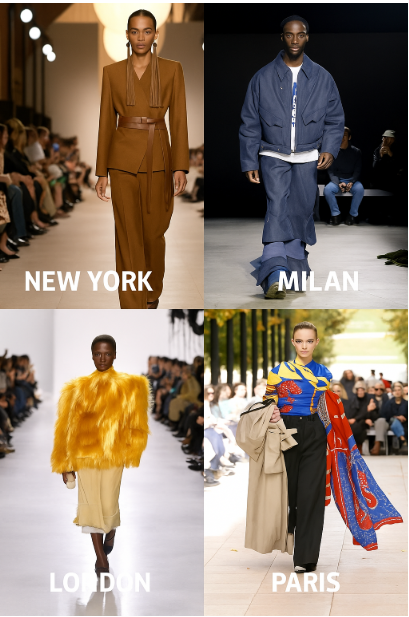
But what makes these four cities the untouchable pillars of the fashion calendar? Let’s trace their origins, dissect their DNA, and understand how each one commands its own distinct aura on (and off) the runway, drawing on insights from the 2025/26 seasons.
The Origins: How the Big Four Rose to Power
The idea of a “Fashion Week” began long before front-row selfies and streaming runways. It all started with Charles Frederick Worth, the father of haute couture, who opened his Parisian fashion house in the 1850s. He invited clients to see his designs modeled on live mannequins — essentially the birth of the fashion show.

Paris became the blueprint for fashion presentations, and by the mid-20th century, other cities followed suit.

New York staged its first official “Press Week” in 1943 to divert attention from Paris during World War II.

Milan, already the home of luxury leather and tailoring, organized its first official week in 1958.
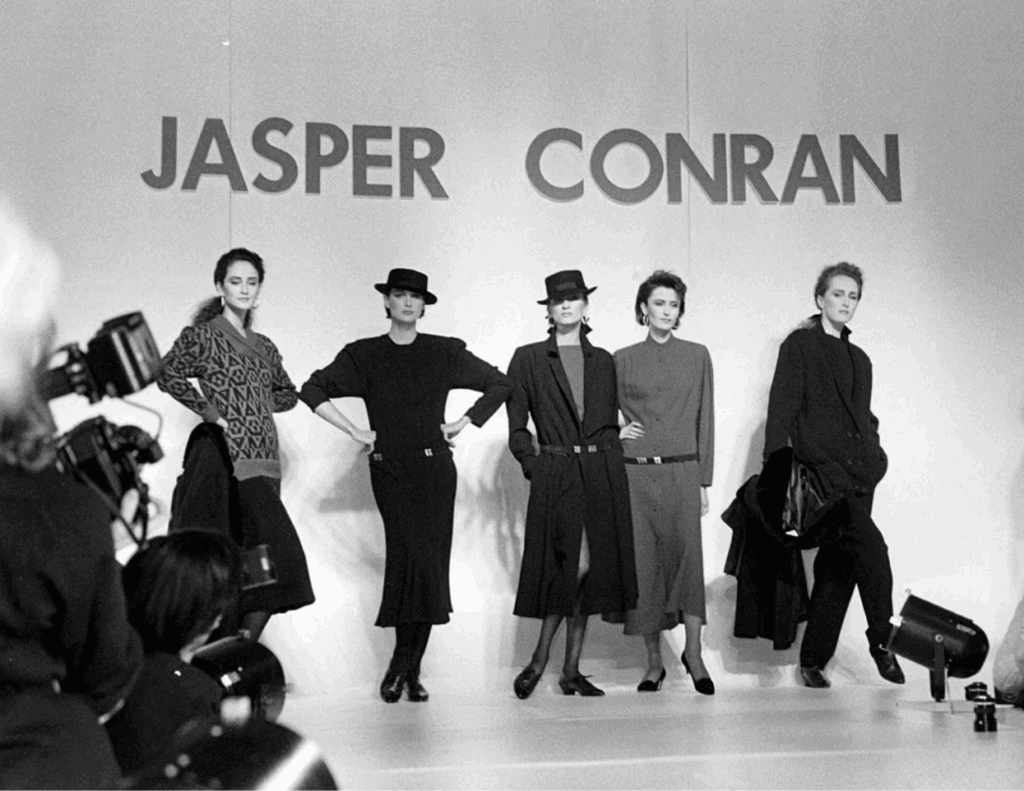
London, rebellious and raw, joined in 1984 with the British Fashion Council’s push to showcase avant-garde talent.
Together, these cities now dominate the fashion calendar, representing the holy quartet of creativity, craftsmanship, commerce, and culture. In 2025, they continued to evolve, incorporating digital elements and sustainability mandates, while facing competition from emerging hubs such as Seoul, Shanghai, and Tokyo.
A Side-by-Side Comparison of the Big Four
To provide a clear overview, here’s an updated comparison based on the 2025 seasons, including economic impact data and global reach metrics. These figures reflect the Spring/Summer 2026 collections shown in September/October 2025, highlighting how the events drive billions in revenue and influence consumer trends worldwide.
How do they compare:
| Attribute | New York Fashion Week | London Fashion Week | Milan Fashion Week | Paris Fashion Week |
| History | Originated from “Press Week” in 1943, organized by Eleanor Lambert to promote American designers during WWII; evolved from early 20th-century department store shows with theatrical themes. | Began in 1984 by the British Fashion Council to elevate British fashion globally; roots in informal 1970s events like Percy Savage’s “New Wave Show.” | Started in 1958 by Camera Nazionale della Moda Italiana to spotlight Italian luxury craftsmanship; preceded by Florence shows from 1951 at Palazzo Pitti, featuring designers like Emilio Pucci. | Traces its roots to 1850s Paris with Charles Frederick Worth’s cohesive collections; officially established in 1973 by the French Fashion Federation; post-WWII formalized with couture mandates. |
| 1st Fashion Week Date | 1943 | 1984 | 1958 | 1973 |
| Sponsors | IMG, CFDA, Rakuten, Afterpay | British Fashion Council, TONI&GUY, Mercedes-Benz | Camera Nazionale della Moda Italiana, Gucci, Prada, Versace | Fédération de la Haute Couture et de la Mode, LVMH, Kering, L’Oréal |
| When is it held | February & September | February & September | February & September | January & June (Menswear), February & September (Womenswear) |
| Number of Designers (approximate) | 100–120 (including 47 runway shows and presentations) | 80–100 (with over 250 designers in the broader community | 60–70 | 70–100 (nine-day schedule with diverse international talent) |
| Common Venues | Spring Studios, Skylight Clarkson Square | Somerset House, The Store X | Palazzo Serbelloni, Fondazione Prada | Grand Palais, Palais de Tokyo, Carrousel du Louvre |
| Well-known Designers | Michael Kors, Tom Ford, Ralph Lauren, Carolina Herrera, Telfar Clemens, Elena Velez | Burberry, Alexander McQueen, Vivienne Westwood, Simone Rocha, Grace Wales Bonner, Tolu Coker | Gucci, Prada, Versace, Dolce & Gabbana, Fendi | Chanel, Dior, Louis Vuitton, Saint Laurent, Balmain |
| Location | New York City, USA | London, UK | Milan, Italy | Paris, France |
| Duration | Up to 9 days | Four to six days | Seven days | Up to 9 days |
| Vibe | Sophisticated/ polished | Cool/ chic | Bold and theatrical | Serious fashion |
| Unique Feature | Commercial, celebrity-driven, wearable luxury. | Edgy, innovative, and youth-focused. | Glamorous, opulent, and craftsmanship-oriented | The epitome of haute couture and artistic storytelling. |
| Economic Impact (2025, Approx.) | $900 million, boosting tourism, retail, hospitality; supports ~180,000 jobs. | £269–£365 million (~$350–$470 million); includes £100M+ in orders, £65M from international guests; supports 880,000–1M jobs. | €239 million (+12.3% from 2024), driven by shopping and visitors; tied to the €92.4B industry. | €1.7 billion, with 94% hotel occupancy; part of €3.9B Big Four impact |
| Global Reach (2025 Insights) | High media coverage; influences fast-fashion via street style, social media | Nearly 50% TikTok engagement (2.9M likes); champions diversity, sustainability. | Attracts international buyers and integrates with the design week. | Dominates EMV rankings ($61.9–$84.3M for Dior); celebrity-driven with Zendaya, Lisa. |
| Iconic Historical Moments | 1914 Vogue “Fashion Fete”;1990s formalization post-Michael Kors ceiling collapse. | 1985 Princess Diana-hosted event at Lancaster House; 1990s rise of Alexander McQueen. | 1951 Florence shows for U.S. buyers; 1991 Versace supermodel runway. | 1973 “Battle of Versailles” U.S.-French rivalry; 1998 Yves Saint Laurent spectacle for 1.7B viewers |
These metrics underscore the Big Four’s role in generating economic value — from job creation (nearly 900,000 in the UK alone) to retail boosts — while amplifying trends through social media and street style.
New York: Where Fashion Meets Function

New York Fashion Week (NYFW) is where pragmatism meets polish. Born of necessity during World War II to highlight American designers, it evolved from early 20th-century department store shows, such as Ehrich Brothers’ 1903 theatrical events, and Vogue’s 1914 “Fashion Fete” organized by Edna Woolman Chase.

American fashion became redefined by designers like Claire McCardell and Halston, who focused on functionality without sacrificing elegance. In 2025, it remained a launchpad for globally recognized names ike Michael Kors, Tom Ford, Ralph Lauren, Carolina Herrera, Telfar Clemens, and Elena Velez, with 101 events (47 runway shows). It’s a hotspot for celebrity culture and street-style photographers, generating $900 million in economic impact and supporting ~180,000 jobs in tourism, retail, and hospitality.
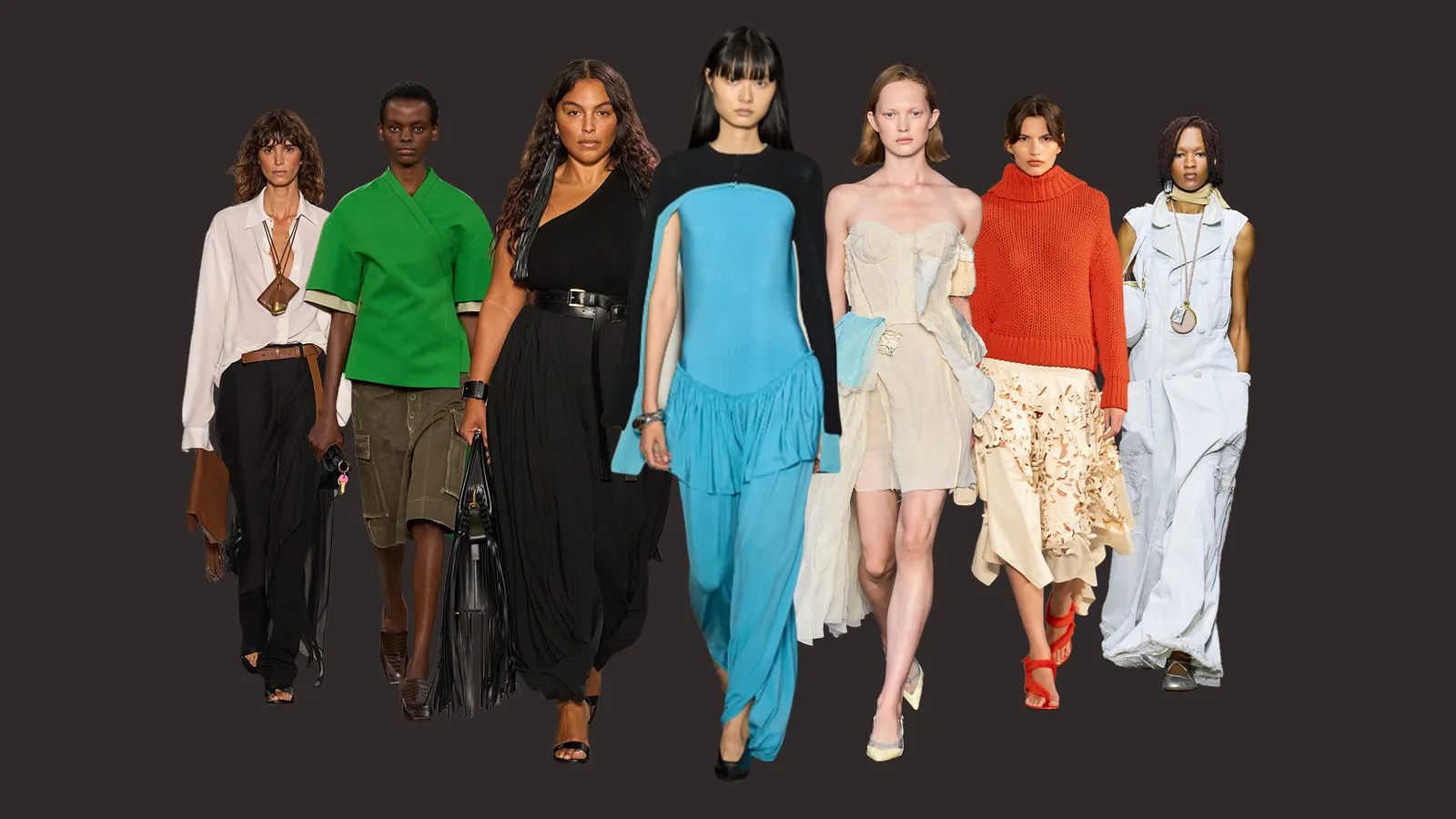
Its strength lies in accessibility. While Paris speaks in whispers of couture, New York exclaims wearable luxury for real life — a mix of power dressing, modern tailoring, and cultural crossover. Think of it as the Wall Street of fashion: business-savvy, bold, and distinctly American. For instance, Elena Velez’s edgy collections and Luar’s bold statements highlighted emerging talent, while the event’s $900 million economic impact supported local industries like tourism and retail.
NYFW also influences global consumer behavior, with trends like oversized silhouettes trickling down to fast-fashion retailers. As Anna Wintour has noted, “New York is about energy and commerce — it’s where ideas become accessible.”
London: The Birthplace of Bold Creativity
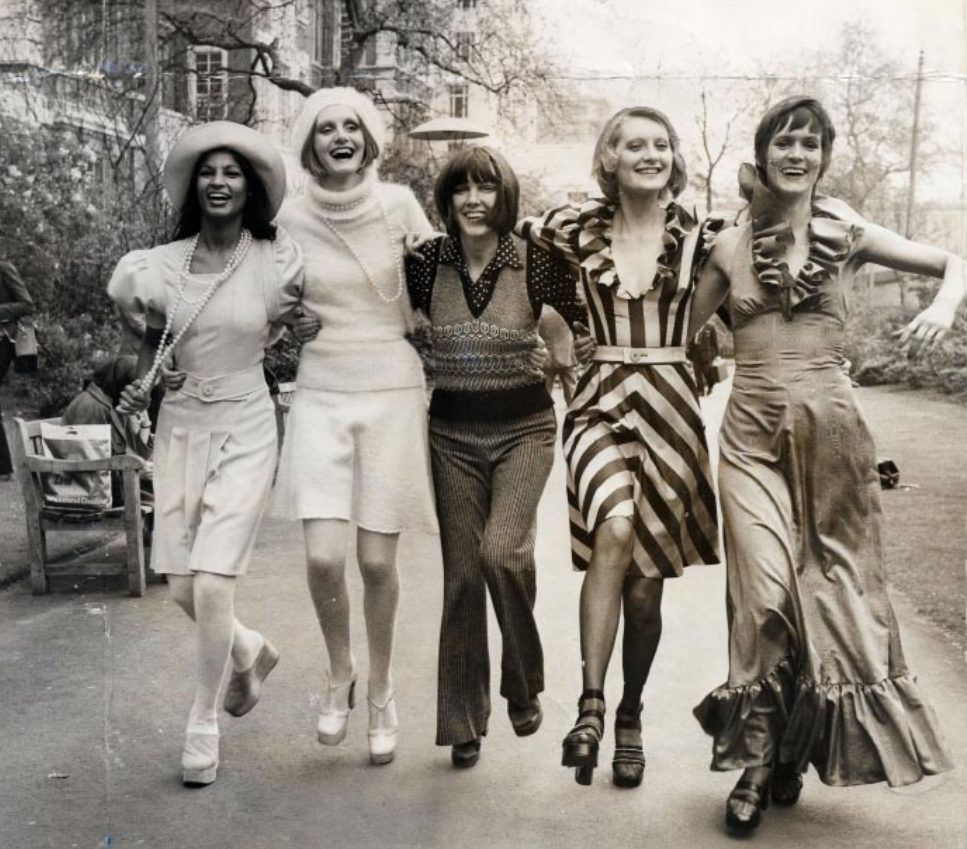
London doesn’t follow trends; it disrupts them. Home to Alexander McQueen, Vivienne Westwood, and JW Anderson, London Fashion Week thrives on rebellion and risk-taking. It’s the birthplace of punk, subculture couture, and unapologetic self-expression. Its roots trace to informal 1970s events like Percy Savage’s “New Wave Show” with Bianca Jagger, formalized in 1984 by the British Fashion Council.
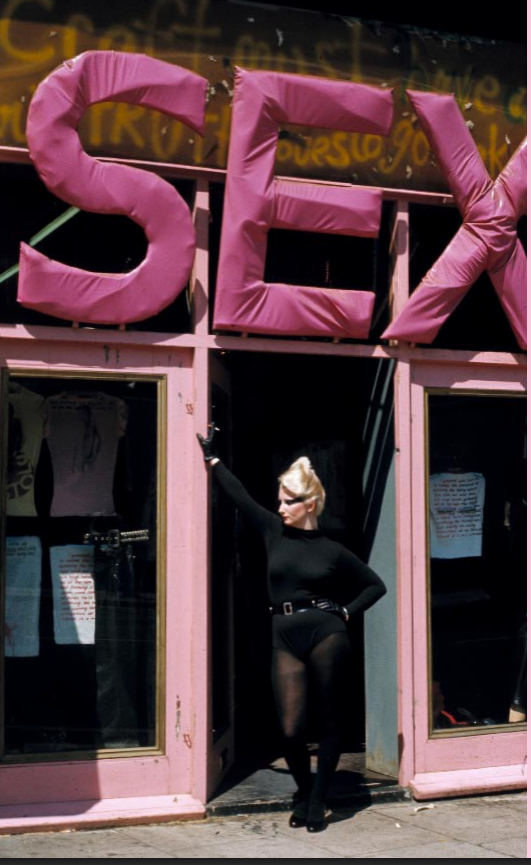
In 2025, LFW featured 157 brands (50 shows, 23 presentations, 250+ in the broader community). LFW champions emerging designers through its NEWGEN initiative — giving future stars like Simone Rocha, Erdem, and 2025 standouts such as Tolu Coker and Steven Stokey-Daley their global spotlight. The event generated £269–£365 million (~$350–$470 million), including £100 million in orders and £65 million from international guests, supporting 880,000–1 million UK jobs.
The city’s fashion DNA is fiercely experimental — less about perfection, more about personality. London is fashion’s laboratory, where ideas are tested before they hit mainstream acceptance.
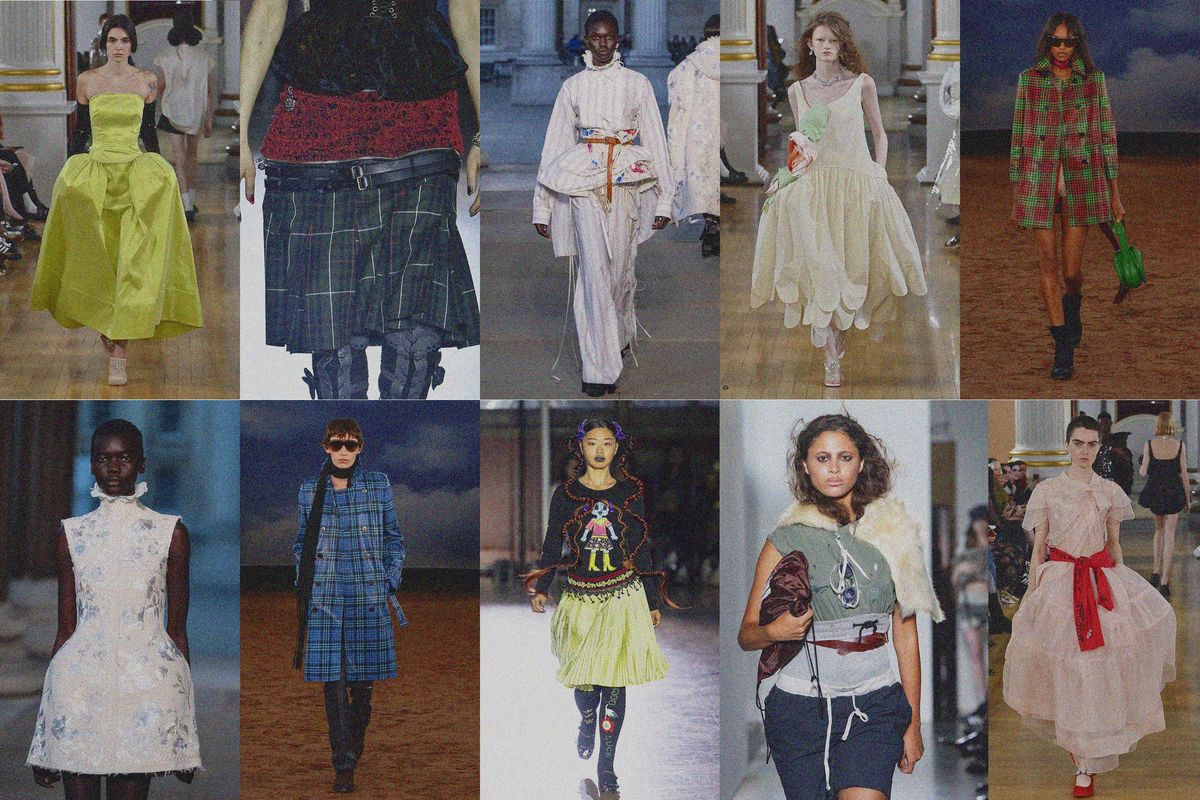
In 2025, highlights included futuristic dusters and circus-inspired romance, emphasizing creativity amid economic challenges. The event adopted stricter sustainability requirements, including reducing single-use materials and promoting ethical supply chains through the Institute of Positive Fashion. This aligns with broader industry shifts, as one designer noted: “London reminds us that fashion is powerful through innovation and inclusivity.”
LFW’s cultural impact extends to social media, driving nearly half of engagement on platforms like TikTok, and supports underrepresented voices from lower socio-economic backgrounds.
Milan: The Kingdom of Craftsmanship and Glamour

If New York sells, and London shocks, Milan seduces. Italian fashion’s heartbeat is craftsmanship, rooted in Florence’s 1951 Palazzo Pitti shows, inviting U.S. buyers like Saks Fifth Avenue. It was formalized in 1958 by the Camera Nazionale della Moda Italiana.
From the luxurious tailoring of Giorgio Armani to the maximalist extravagance of Dolce & Gabbana, Milan Fashion Week is a celebration of texture, opulence, and artistry.
:max_bytes(150000):strip_icc():format(webp)/092925-Best-Milan-Looks-3a9b5991a2db4c85b153dbbd51bdfdae.jpg)
Organized by the Camera Nazionale della Moda Italiana, the 2025 event united Gucci, Prada, Versace, Dolce & Gabbana, and Fendi across 55 physical and 4 digital shows, generating €239 million (+12.3% from 2024) and tying to Italy’s €92.4 billion industry.
Each brand presented its own vision of la dolce vita. It was not just fashion, but theatre. Milan’s shows often take place in historic palazzos, with chandeliers glinting off sequins and silk, turning each runway into a cinematic experience.
Emerging designers, such as those from Istituto Marangoni (e.g., theatre-inspired couture), added diversity, while the Green Carpet Fashion Awards highlighted sustainability. A 1991 Versace runway with supermodels Cindy Crawford, Naomi Campbell, Linda Evangelista, and Christy Turlington defined Milan’s ready-to-wear legacy.
As Alessandro Michele once reflected on Milan’s essence: “It’s about sensuality and heritage — fashion as an emotional experience.”
Milan also faces influence from non-Western worlds; for example, Shanghai’s “new Chinese style” is revitalizing traditional elements, potentially challenging Milan’s dominance in craftsmanship.
Paris: The Pinnacle of Haute Couture
Then comes Paris — the grand finale, the crown jewel, the epicenter of haute couture. Starting with Charles Frederick Worth’s 1850s cohesive collections and Paul Poiret’s lavish parties, it was formalized in 1973 by the French Fashion Federation, with post-WWII mandates for 35-garment couture showcases. The 1973 “Battle of Versailles” saw U.S. designers challenge French greats, with Yves Saint Laurent’s 1998 show reaching 1.7 billion viewers.
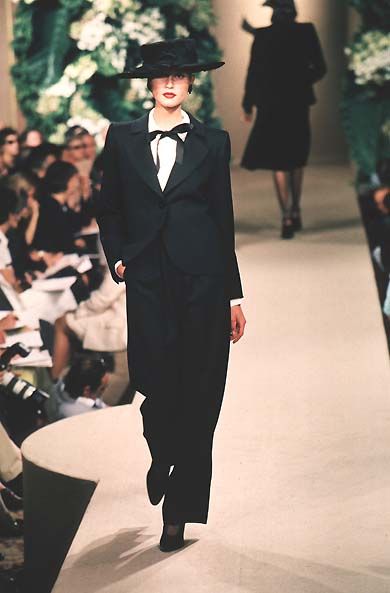
In 2025, PFW featured 74 shows and 37 presentations over nine days, with Chanel, Dior, Louis Vuitton, Saint Laurent, and Balmain. It generated €1.7 billion in revenue, with 94% hotel occupancy, part of a €3.9 billion Big Four impact.
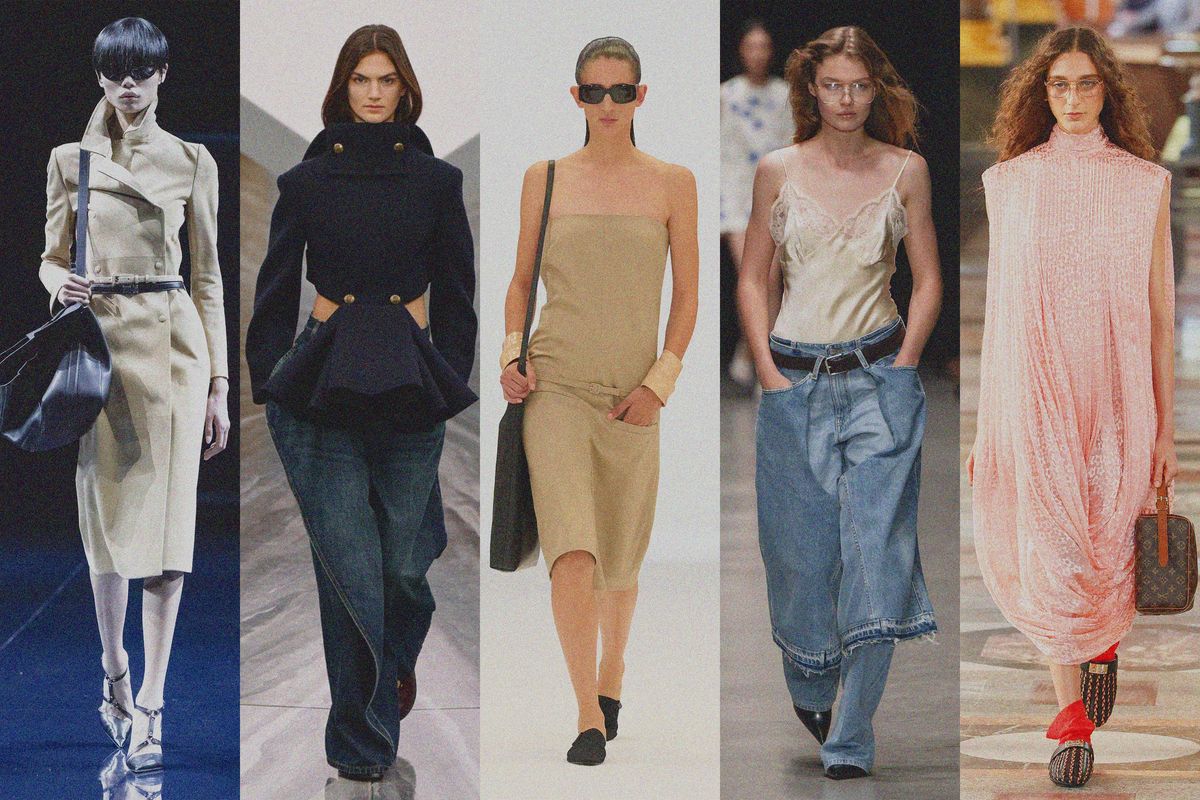
Paris Fashion Week (PFW) isn’t just an event; it’s a statement of legacy. Home to Chanel, Dior, Louis Vuitton, Saint Laurent, and Balmain, Paris has long been synonymous with craftsmanship, art, and storytelling.
Here, fashion transcends the fabric — it’s philosophy, architecture, and poetry in motion. Runways are staged in monumental spaces like the Grand Palais or Palais de Tokyo, transforming garments into cultural expressions.
In 2025, Matthieu Blazy’s space-themed Chanel debut and Dior’s New Look revival with celebrities like Zendaya and Lisa (BLACKPINK) emphasized nostalgia, generating $61.9 million–$84.3 million in media impact value (MIV) for Dior alone. Sustainability efforts included recycled fabrics and digital presentations.
As Pascal Morand of the Fédération noted: “Paris showcases vitality and international diversity.”
Why They’re Called “The Big Four”
Each of the Big Four owns a different corner of the fashion compass:
- New York represents commerce and wearability.
- London champions creativity and rebellion.
- Milan celebrates craftsmanship and sensuality.
- Paris defines artistry and prestige.
Together, they form fashion’s global ecosystem — a symphony where every city brings its own rhythm. The International Fashion Week Calendar officially recognizes them, and their order of occurrence sets the tone for designers, buyers, and editors worldwide. However, emerging capitals like Seoul (with K-fashion influence), Tokyo (streetwear innovation), and Shanghai (revitalizing traditions) are gaining traction, infusing global trends with non-Western perspectives.
Fashion Weeks and Their Fetish Towards Homegrown Brands
The world’s top fashion weeks often spotlight their native designers first. It’s not just pride — it’s strategy. Local luxury houses fuel prestige, attract global media, and shape each city’s identity on the world stage.
New York Fashion Week: Where Commerce Meets Cool
NYFW balances artistry with accessibility.
- Ralph Lauren channels American heritage into aspirational silhouettes.
- Michael Kors embodies jet-set sophistication with pragmatic glamour.
- Tom Ford adds cinematic swagger to modern tailoring.
- Carolina Herrera delivers elegance and romance.
- Marc Jacobs injects wit and theatricality into an otherwise structured week.
- The Row, founded by Mary-Kate and Ashley Olsen, exemplifies minimalist luxury, but its recent choice to present collections abroad highlights the ongoing “talent migration” challenge NYFW faces.
Emerging voices like Brandon Maxwell, LaQuan Smith, and Tory Burch continue to energize the week, while Fashion Weekend provides a public-facing showcase that bridges exclusivity with inclusivity.
London Fashion Week: The Laboratory of Innovation
LFW’s DNA is defined by courage, rebellion, and intellectual play, fostering experimental designers who push fashion’s boundaries.
- Burberry modernizes British heritage with visionary leadership.
- Alexander McQueen continues to merge spectacle with emotional storytelling.
- Vivienne Westwood’s punk ethos informs the city’s avant-garde attitude.
- Simone Rocha and JW Anderson embody romanticism, wit, and cross-generational innovation.
Supported by the British Fashion Council through initiatives like Fashion East and NEWGEN, London ensures emerging talent thrives alongside established houses. Creativity leads the narrative here, often outweighing commerce.
Milan Fashion Week: The Power of “Made in Italy”
Milan is the capital of craftsmanship, sensuality, and heritage. Here, luxury is tactile, extravagant, and unmistakably Italian.
- Gucci dominates red carpets and social media, setting global trends.
- Prada merges intellect with irony, cementing Milan as a conceptual luxury hub.
- Versace delivers unapologetic glamour and bold aesthetics.
- Dolce & Gabbana produces cinematic tributes to Italian identity.
- Fendi innovates in leather and fur craftsmanship, bridging tradition and modernity.
Other stalwarts like Armani, Bottega Veneta, Missoni, and Max Mara reinforce Milan’s reputation for consistency, artistry, and longevity.
Paris Fashion Week: Where Legacy Meets Spectacle
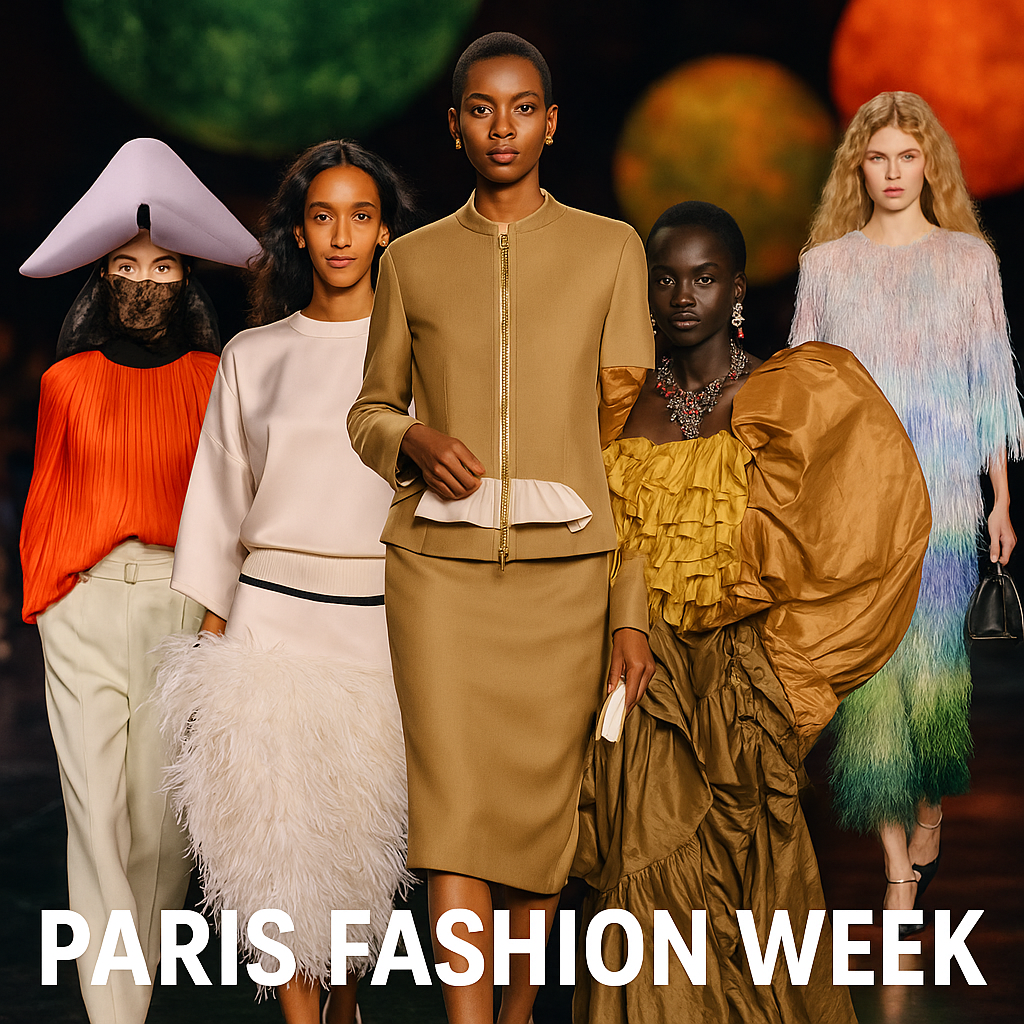
Paris is fashion’s apex — the birthplace of haute couture and the cultural heartbeat of luxury. PFW is where artistry transcends commerce, and the runway becomes narrative.
- Chanel defines Parisian elegance and grandeur, from Lagerfeld to Viard.
- Dior balances heritage with contemporary feminist storytelling.
- Louis Vuitton transforms iconic landmarks into global spectacles.
- Saint Laurent embodies sleek seduction, while Balmain blends celebrity magnetism with heritage.
Complementary houses like Hermès, Loewe, and Givenchy enrich the week’s aesthetic diversity. Paris isn’t just a stop; it is the climax of global fashion month.
The Big Four’s allegiance to their homegrown powerhouses isn’t merely about favoritism; it is an orchestrated strategy that sustains relevance, amplifies media attention, and ensures economic and cultural clout. From the skyscrapers of New York to the historic boulevards of Paris, these flagship brands act as both anchors and accelerators for their respective fashion weeks.
A Bias or Is It a Smart Strategy?
When you look past the glitz, one of the most striking truths of the Big Four is why a few megabrands command the magnetic center — not just because of heritage, but because they move numbers. They don’t just anchor a fashion week; they amplify it. And the data is relentless.
Paris: The Data Crown Jewel
- For the Spring/Summer 2024 Paris women’s shows, media impact value (MIV) jumped 30% year-on-year — from US$384.4 million to US$499 million.
- Nearly 160,000 runway looks were downloaded — a 64% increase — placing Paris well ahead of Milan (100,000), New York (< 80,000), and London (slightly over 40,000).
- Christian Dior led the brand ranking with US$59.5 million MIV, up 71% year-over-year. Louis Vuitton saw a 74% leap to US$38.2 million, moving up to 2nd place.
- On the social media front, Instagram accounted for 53.9% of Paris’s MIV (US$269.1 million), while TikTok’s MIV grew 172% YoY.
- Celebrity influence surged too — celebrity‐generated MIV rose from US$32.9 million to US$63.6 million, making up 12.8% of total MIV that season.
- In the most recent Paris cycle, 25.5 million social media mentions (posts, comments, hashtags) were related to PFW — compared to 5 million for Milan, 3.8 million for New York, and 2.7 million for London.
- Brands from Paris dominated the top rankings. Dior accounted for 35.04% of all social mentions; Louis Vuitton was next (8.73%), followed by Loewe and Valentino.
- London had a stark contrast — no British brand entered the top 20 in mentions. Burberry, the UK’s flagship, ranked 27th.
- The report critiqued New York’s digital performance as “the symbolic end of American dominance in global digital fashion.” It cited the lack of K-pop / Asian strategies, a historic focus on sportswear (which generates less viral buzz than couture), and the migration of American designers to European showcases.
These numbers do more than impress — they tell a story: brands that can harness social media, celebrity reach, and narrative control become the gravitational cores of fashion weeks.
Paris’s ascendancy isn’t accidental. It’s engineered: the full presence of its top-tier houses, the spectacle, and the infrastructure (in media, marketing, celebrity relations) that amplify every moment.
So even when Milan or New York host stellar collections, their digital echo often pales compared to Paris’s megabrands — and the reason isn’t marginal. It’s structural.
Common Forces That Cement Brand Dominance
All four cities are subject to similar gravitational pulls. These are the recurring forces that allow megabrands to dominate not just visually, but conceptually:
- Financial Muscle & Spectacle
Big brands can underwrite hyper-production: custom sets, A-list talent, large venues, high-profile campaigns. These spectacles create content that’s already shareable. A show isn’t just a runway; it’s a story — and the brands with resources tell the most compelling ones.
- Narrative Control & Media Strategy
These houses own their storytelling. Behind-the-scenes access, exclusive influencer tie-ins, and tightly knit media relations build the narrative arc that dominates coverage, pushing smaller labels to be reactive rather than proactive.
- Access to Attention (Buyers, Press, Tastemakers)
Editors, buyers, and influencers tend to schedule around the safe bets. If your brand isn’t among the most visible, timing and venue choices become secondary. The bigger brands already lock in the prime spots, making it hard for newer voices to break through.
- Digital Dominance & Celebrity Leverage
Paris’s recent stats prove this: Instagram’s dominant MIV share, the explosive growth in TikTok engagement, and the rise in celebrity-generated media all point to a new era of amplification. Brands that optimize for digital resonance win the narrative war.
- Economic Impact & City Stakeholding
Luxury houses bring in money — not just from ticket sales, but also from sponsorships, tourism, hospitality, and brand-city partnerships. Fashion weeks rely on this financial anchor; losing a few key houses could unbalance the whole ecosystem.
Cracks in the Couture: The Big Four’s Hidden Hiccups
Even the most glamorous institutions have growing pains. Behind the flashbulbs and front-row glamour, each of the Big Four Fashion Weeks faces its own identity challenges — proof that even at the top, fashion is in constant flux.
New York Fashion Week: A Brand in Search of Itself
Once the epicenter of American cool, New York Fashion Week (NYFW) now finds itself grappling with questions of identity and influence.
Shifting Focus: Many marquee designers — from Ralph Lauren to The Row — have chosen to show abroad, leading to a noticeably thinner schedule and a sense that New York is losing its global edge.
Cracks in the Couture: The Big Four’s Hidden Hiccups
Even the most glamorous institutions have growing pains. Behind the flashbulbs and front-row glamour, each of the Big Four Fashion Weeks faces its own identity challenges — proof that even at the top, fashion is in constant flux.
New York Fashion Week: A Brand in Search of Itself
Once the epicenter of American cool, New York Fashion Week (NYFW) now finds itself grappling with questions of identity and influence.
- Shifting Focus: While some American designers — such as The Row — have moved their presentations to Europe for strategic or aesthetic reasons, marquee houses like Ralph Lauren, Michael Kors, and Carolina Herrera continue to anchor the New York calendar. The result is less an exodus and more a fragmentation of the system — a reflection of how fashion’s ecosystem is evolving rather than eroding.
The Row frequently holds its shows in Paris, rather than New York, as part of a long-term strategic decision to tap the European market and build its exclusivity ethos. - Exorbitant Costs: The city’s sky-high production expenses and limited government support have made it increasingly difficult for independent designers to compete with their European counterparts, who often receive state or institutional funding.
- Commercial Saturation: New York’s strength has always been its pragmatic, ready-to-wear realism. But as shows become more fragmented and digital-first, the event’s prestige has thinned — trading cultural authority for commercial visibility.
NYFW, in many ways, reflects the American paradox: wildly creative, but burdened by capitalism’s logistics.
London Fashion Week: The Rebel with a Cause
London Fashion Week (LFW) remains fashion’s most daring laboratory, but even innovation comes with growing pains.
- Loss of Key Talent: Several high-profile British designers, including Victoria Beckham, have migrated to Paris in search of greater exposure and a more global audience.
- Challenges for Emerging Designers: Despite its creative ecosystem, LFW’s smaller players struggle with overcrowded schedules, limited budgets, and restricted access to international press.
- Supporting “Britishcore”: The British Fashion Council continues to nurture experimental voices through initiatives such as Fashion East and NEWGEN, but these initiatives exist in tension with the gravitational pull of major global brands.
London thrives on rebellion, but in an industry driven by influence, even rebellion sometimes needs a sponsor.
Fashion, like power, is cyclical. As legacy brands continue to define the narrative, the challenge for New York and London — and, increasingly, for Milan and Paris too — is to balance prestige with progress.
The Future: Prestige Blends With Purpose and Progress
The next evolution of Fashion Week isn’t about who stages the biggest show — it’s about who tells the most resonant story. Sustainability, diversity, and digital storytelling are redefining influence, challenging legacy brands to evolve while staying true to their heritage. Collaboration, innovation, and cultural relevance will dictate the future of the Big Four’s most celebrated stages.
For fashion enthusiasts and collectors alike, this shift presents an opportunity beyond the runway. Platforms like The Luxury Closet bring these global trends into your personal wardrobe — offering authenticated, pre-owned pieces from the brands shaping today’s fashion narrative. By curating and trading these iconic items, you’re not just investing in style, but in the very story of fashion’s evolution.
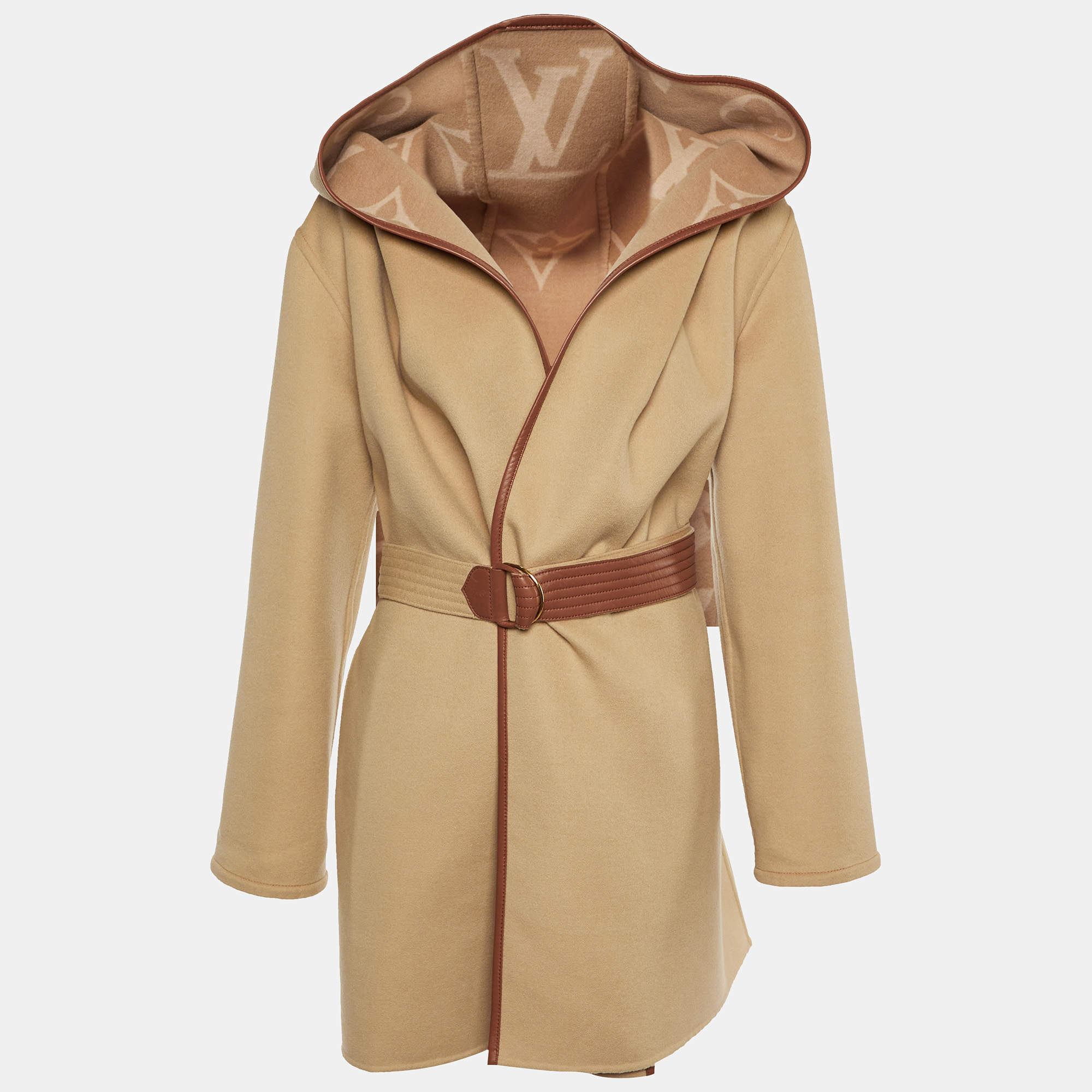
Discover your next statement piece and connect with the legacy of luxury — explore The Luxury Closet today.
Bibliography
- The Pink Lookbook. “THE HISTORY OF FASHION WEEK (It Didn’t Start in Paris).” YouTube, 2023. https://youtu.be/KYk0f8p40Zc.
- The Fordham Ram. “The Economic Impact of New York Fashion Week.” 2025. https://thefordhamram.com/news/fashion-week/.
- Montenapo Daily. “Milan, the Capital of Fashion and Economics.” Sep 2025. https://montenapodaily.com/en/2025/09/22/milano-capitale-della-moda-e-delleconomia-la-fashion-week-genera-un-indotto-record-da-239-milioni-di-euro/.
- The Guardian. “London Fashion Week Aims to Restore Sector’s Role as UK Economic Powerhouse.” Sep 2025. https://www.theguardian.com/fashion/2025/sep/19/london-fashion-week-aims-to-restore-sectors-role-as-uk-economic-powerhouse.
- BoF. “Beyond the Runway: Fashion Week’s Cultural and Economic Impact.” 2025.
- FHCM. “Paris Fashion Week Official Schedule Spring/Summer 2026.” 2025. https://www.fhcm.paris/en/paris-fashion-week.
- CFDA. “Preliminary Official New York Fashion Week Schedule for September 2025.” Jul 2025. https://cfda.com/news/cfda-releases-preliminary-official-new-york-fashion-week-schedule-for-september-2025/.
- FashionUnited. “London Fashion Week SS26 Will Have 18% More Designers Showing On-Schedule.” Jul 2025. https://fashionunited.com/news/fashion/london-fashion-week-ss26-will-have-18-percent-more-designers-showing-on-schedule/2025072367304.
- CNN. “Milan Fashion Week Spring-Summer 2026: Brands Make a Renewed Case for ‘Made in Italy’.” Sep 2025.
- Vogue Business. “Paris Fashion Week Cheat Sheet: Spring/Summer 2026.” Sep 2025. https://www.voguebusiness.com/story/fashion/paris-fashion-week-cheat-sheet-spring-summer-2026.
- Governor Kathy Hochul’s Office. “To Kick Off New York Fashion Week.” 2025. https://www.governor.ny.gov/news/kick-new-york-fashion-week-governor-hochul-highlights-24-billion-impact-new-yorks-fashion.
- AMW Group. “NYC, Milan & Paris Fashion Weeks September–October 2025.” 2025. https://www.amworldgroup.com/blog/september-october-2025-fashion-weeks-nyc-milan-paris.
- FashionUnited. “The Economic Fallout of Online Fashion Week.” 2025. https://www.businessoffashion.com/news/fashion-week/the-economic-fallout-of-online-fashion-week/.
- MyLondonMap. “London Fashion Week 2025 Guide.” 2025. https://www.mylondonmap.com/london-fashion-week-2025.
- The Guardian. “London Fashion Week Economic Impact.” Sep 2025.
- CNMI. “Milano Fashion Week Economic Impact Report.” 2025. https://milanofashionweek.cameramoda.it/en/.
- T-Fashion Blog. “The Milan Fashion Week Trends & Analytics – Spring Summer 2026.” Oct 2025. https://tfashion.ai/blog/the-milan-fashion-week-trends-and-analytics-spring-summer-2026-ss26-milan.
- WWD. “Paris Fashion Week Almost Eclipsed the 2025 Cannes Film Festival.” Oct 2025. https://wwd.com/fashion-news/fashion-scoops/paris-fashion-week-launchmetrics-data-1238299382/.
- Visibrain. “The Biggest Social Media Moments from London Fashion Week 2025.” Feb 2025. https://www.visibrain.com/blog/lfw-2025-deepdive.
- Kolsquare. “How Social Media Trends Shaped London Fashion Week 2025.” Apr 2025. https://www.kolsquare.com/en/blog/beyond-the-catwalk-how-social-media-trends-shaped-london-fashion-week.
- Lefty. “The Top Influencers of PFW SS25 Womenswear.” 2025. https://lefty.io/blog/pfw-ss25-influencers-brands.
- Soap Central. “From Dior to Louis Vuitton… Top 10 Brands at Paris Fashion Week AW25.” Mar 2025. https://www.soapcentral.com/fashion/from-dior-louis-vuitton-valentino-top-10-brands-influencers-paris-fashion-week-aw25-based-emv.
- Vogue. “Anna Wintour on NYFW’s Commercial Appeal.” Ongoing interviews.
- BoF. “Alessandro Michele on Milan’s Craftsmanship.” Pre-2025 archives.
- International Fashion Week Calendar. Official recognition data.
- Launchmetrics. “Spring/Summer 2024 Fashion Week MIV Report.” 2024.
- The Luxury Closet. “Curating Pre-Owned Luxury.” 2025. https://theluxurycloset.com.


